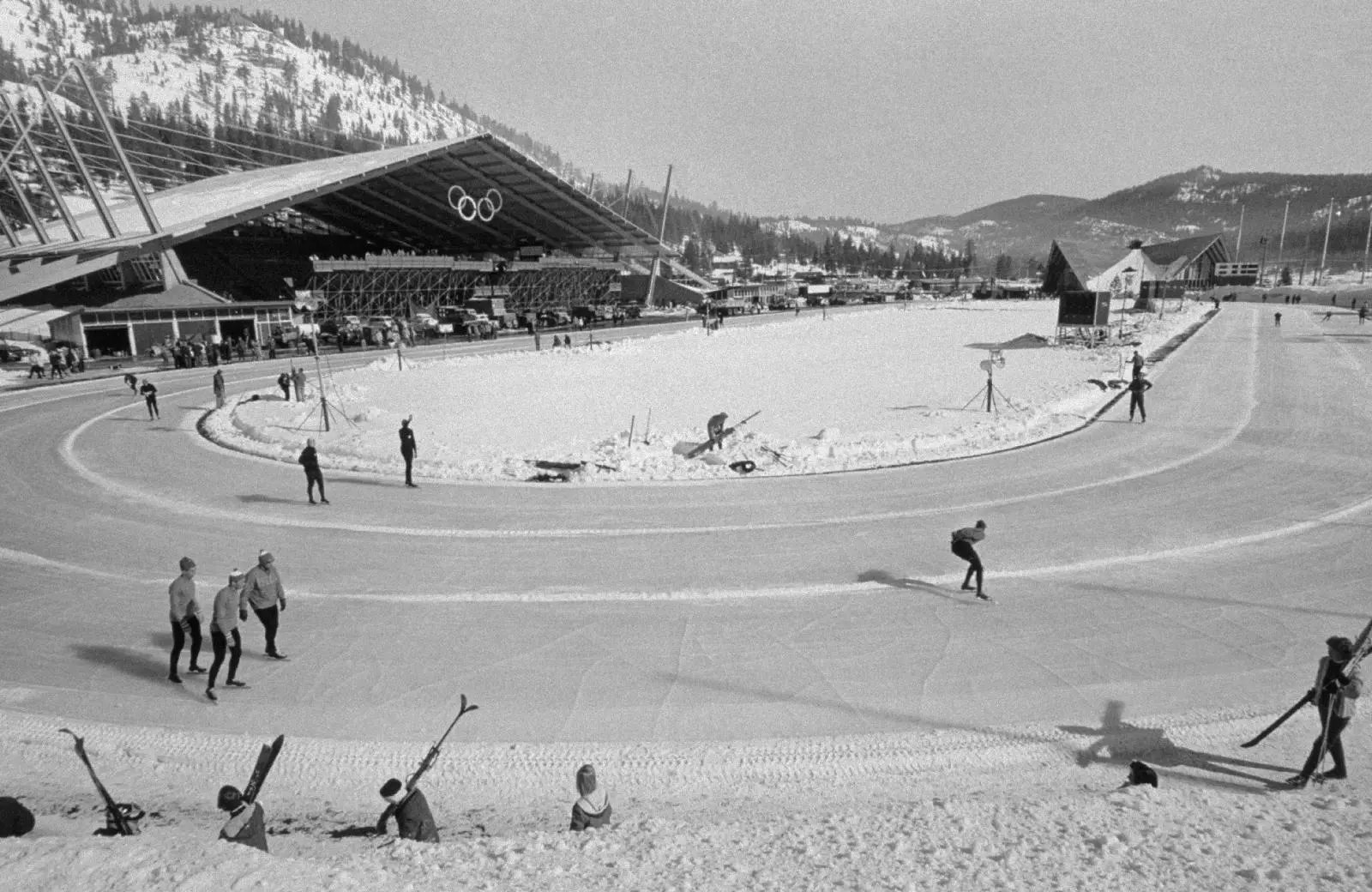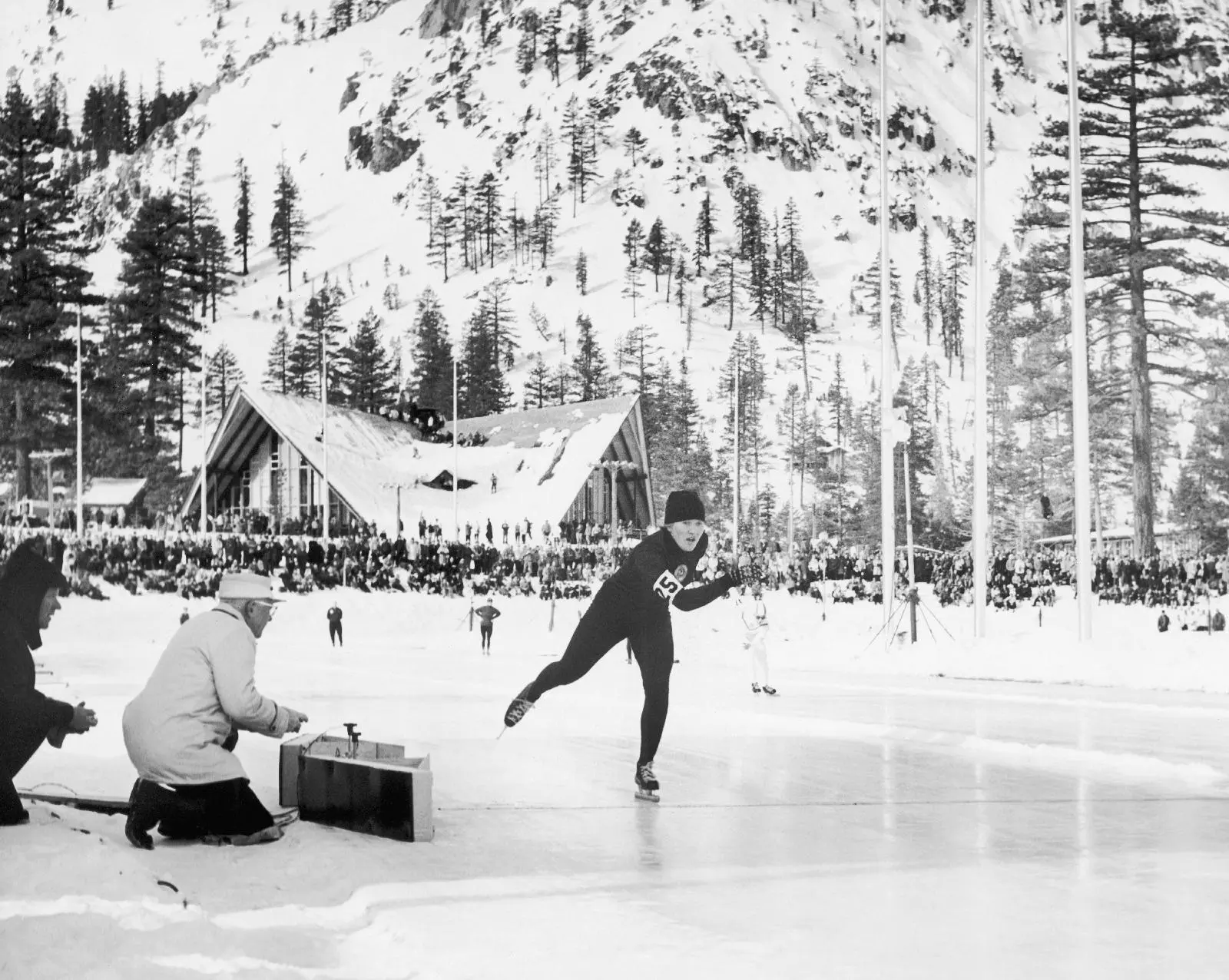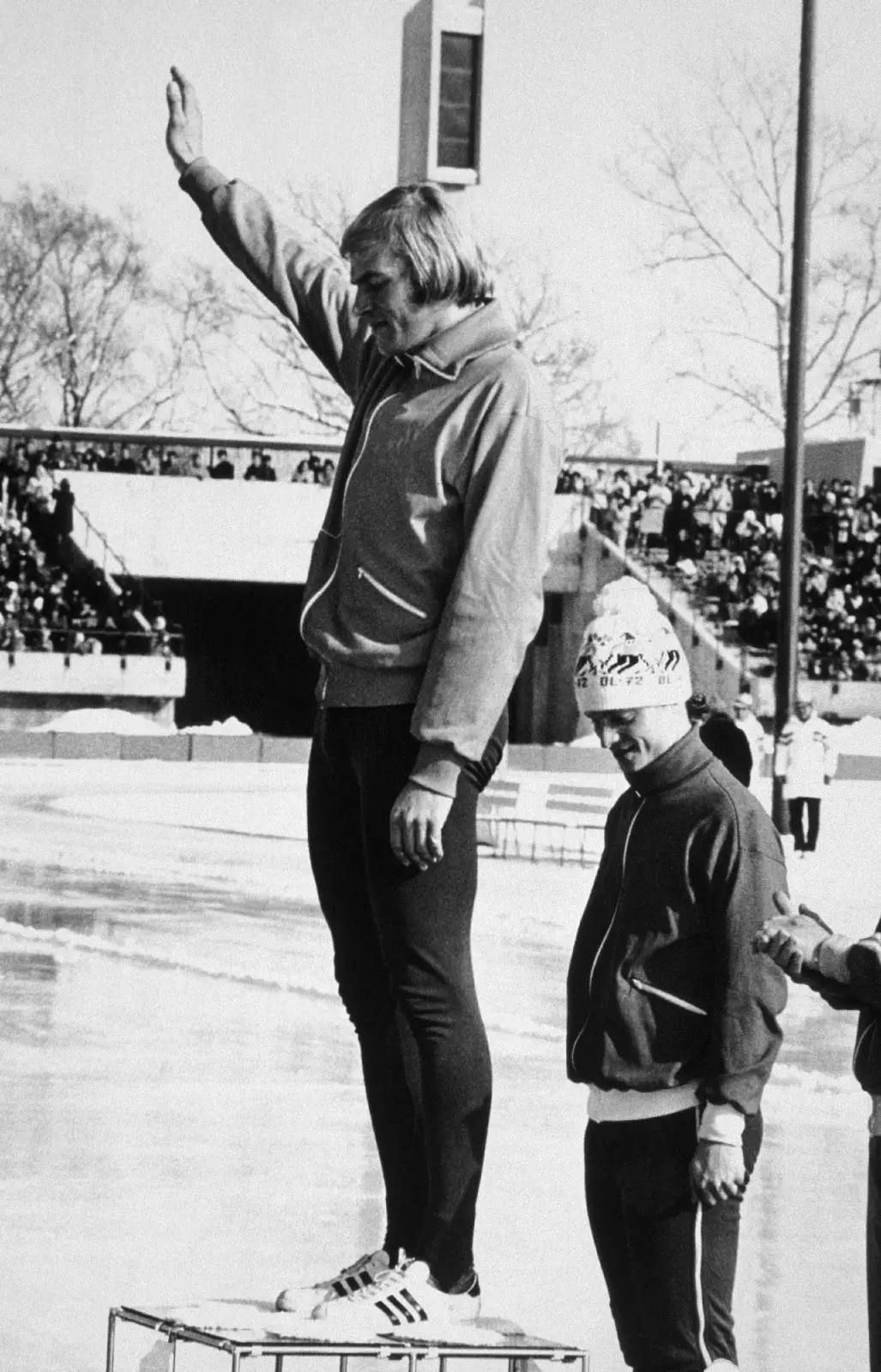
Picture of a Speed Skating rink during the 1960 Olympic Winter Games in Squaw Valley (USA) @International Olympic Committee (IOC)
Speed Skating is about time and times have gradually become faster in the long history of the sport. At times new developments initiated revolutionary jumps in record times. In a brief history of world records we discuss some defining moments, starting with the old age and the first revolution: artificial rinks.
Old age evolution

Woman competing during the 1960 Olympic Winter Games in Squaw Valley (USA) @International Olympic Committee (IOC)
Breaking down the Men’s 10,000m world record illustrates both evolution and revolution in Speed Skating since January 14, 1893, when Oscar Fredriksen (NOR) set the first official world record in the longest classical distance. The Norwegian skater needed 20 minutes and 21.4 seconds to complete 25 laps on January 14, 1893 in Amsterdam (NED).
Fredriksen’s compatriot Halfdan Nielsen broke the 20-minute barrier a month later already, finishing his 10,000m race in Stockholm (SWE) in 19:47.4, and before the turn of the century, Jaap Eden (NED) already brought the 10,000m record down to 17:56.0 (23 Feb 1895).
Whereas Nielsen and Eden took big chunks of the 10,000m mark in the first decade of the official record book, progress slowed down in the early twentieth century and it took over fifty years to shave another minute off. On February 6, 1949, Norway’s Hjalmar Andersen completed the 10,000m in 16:57.4.
The start of a new era
__1952%20Oslo%201952%20Winter%20OG,%20Speed%20Skating__NOR.webp)
Hjalmar Andersen (NOR) competes during the 1952 Oslo Olympic Winter Games in Oslo (NOR) @International Olympic Committee (IOC)
By the end of the 1950s, Speed Skating got a boost, with the first artificial tracks in Sweden, the United States and Norway. The 1959 European Championships in Gothenburg (SWE) were the first to be held on an artificial rink. The possibilities to train and the conditions during races improved massively.
From Andersen’ 1949 mark onwards, the 10,000m world record progressed by almost a minute per decade. Andersen himself brought it down to 16.32,6 in 1952 already, but that time lasted for another eight years, before it was absolutely shattered by Knut Johannesen (NOR) at the first Olympic Games on an artificial track in 1960, Squaw Valley, USA.
__1960%20Squaw%20Valley%20Olympic%20Winter%20Games__Speed%20skating__USA.webp)
Knut Johannesen (NOR) competes during the 1960 Olympic Winter Games in Squaw Valley (USA) @International Olympic Committee (IOC)
Johannesen chopped over 45 seconds off Andersen’s mark to break the 16-minute barrier with 15:46.6, but it took Dutchman Ard Schenk only a little over a decade to break the next one-minute barrier, skating 14:55.9 in 1971. Artificial rinks marked the end of the old age and the beginning of the modern era in Speed Skating.
Right man at revolutionary time

Ard Schenk (NED) celebrates during the 1972 Olympic Winter Games in Sapporo (JPN) @International Olympic Committee (IOC)
Schenk, who made his International Championships debut as an eighteen-year-old with bronze at the 1965 World Allround Championships, came up at the right time to take maximum advantage of the artificial rink revolution. The Dutch phenomenon skated a total of eighteen world records in his entire career on the ice. By the end of the 1970-1971 season, the Dutchman held all distance world records except for the 500m.
When Schenk came to the start of the race in which he broke the 15-minute barrier, he already held the world record with a time of 15:01.6, which he had set just a month earlier at the World Championships in Gothenburg (SWE).
Schenk had lost his European title in January 1971, but the Dutchman hit back hard retaining his world title in Gothenburg (SWE) in February. He travelled to Inzell (GER) for the traditional record races to close off the season a month later.
It was not the 10,000m record as such that he had set his sights on, but the points record in the big combination (500m, 1500m, 5000m and 10,000m). With 7:12.0 on Saturday, Schenk already took a world record in the 5000m and after a good 1500m, he only needed 15.53.4 in the 10,000m for the big combination record.

Ard Schenk (NED) at the Olympic Winter Games 1972©AFP
His opponent Sten Stensen (NOR) inspired Schenk to give it his best once more that season. “Stensen is a skater who is able to break my world record of course, so I did not want to give him a chance” Schenk explained after the race to newspaper NRC Handelsblad.
After the Inzell weekend, Schenk held all Speed Skating world records except the 500m one. He realized that being on top, was different that staying on top however, saying: “People always expect a lot from me. Actually I can only do worse from now on. I hope people understand.”
Yet, Schenk managed to defy the pressure for some seasons to come. In 1972, he conquered the world once more taking home three gold medals (1500m, 5000m, 10,000m) from the Olympic Winter Games in Sapporo (JPN).
Slower pace
Schenk was a trailblazer in many respects, but after his reign in the early seventies, three technical developments accelerated Speed Skating even further: the first skinsuit introduced by Swiss Franz Krienbühl in 1974, the first indoor ice rinks in the 1980s and the introduction of the clap skate in the 1990s.
__2002%20Olympic%20Winter%20Games__Salt%20Lake%20(USA)__GettyImages-52886035.webp)
Jochem Uytdehaage (NED) competes during the 2002 Olympic Winter Games in Salt Lake City (USA) @GettyImages
The evolution of the 10,000m world record slowed down, however. After Schenk’s 1971 race, breaking the next two one minute-barriers took over three decades. Geir Karlstad (NOR) set 13:48.51 at the indoor rink in Calgary on 6 December 1987, and Jochem Uytdehaage (NED) skated 12:58.92 in Salt Lake City on 22 February 2002.
Two decades later and more than fifty years since Schenk’s 14:55.9, current world record holder Nils van der Poel (SWE) skated 12:30.74 at the Olympic Winter Games on 11 February 2022 in Beijing (CHN).